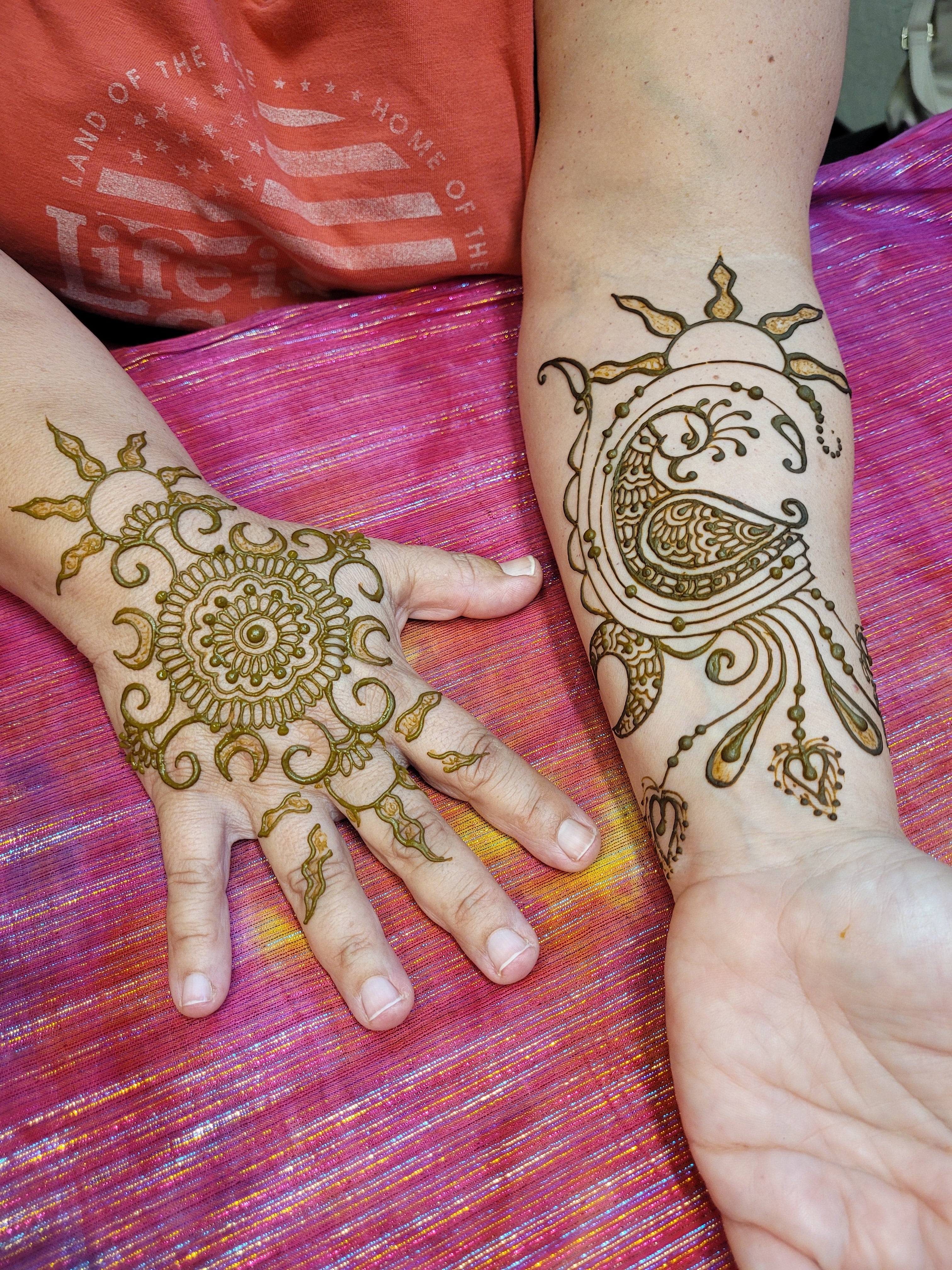Safety: Unsafe Henna Additives

Dangerous substances like PPD in henna (black henna) aren't the only risk. While we might all want darker and longer-lasting henna, it's important not to compromise safety for speed or intensity. We can get beautiful dark color safely!
To get great results safely, stick to using quality products, follow a tried-and-tested recipe, and take good care of your stain.
Some of the most harmful additives include benzene, kerosene, and gasoline, which can not only burn the skin but also are known carcinogens, meaning they can cause and spread cancer.
These can also cause permanent damage to the liver and the kidneys.
Just because there is no skin reaction, does not make it safe!
These dangerous additives might not be as easy to identify as PPD because they stain the skin brown or red rather than black. Here are some signs to help ensure your henna is natural:
- Check with the artist or seller for the ingredients.
- Only get henna done from someone that mixes their own henna.
- Ingredients should be recognizable.
- Natural henna smells like the essential oils used, not like gasoline.
- Natural henna needs to stay on the skin for a while.
- The color starts as orange and darkens to red-brown over a couple of days.
- Henna paste must be stored correctly. Henna paste must be stored frozen.
If someone doesn't seem knowledgeable about henna safety, it's best to avoid getting it from them altogether. When in doubt, it's safer to skip the henna altogether.

Henna is for Everyone!
We all deserve to feel beautiful and powerful!
